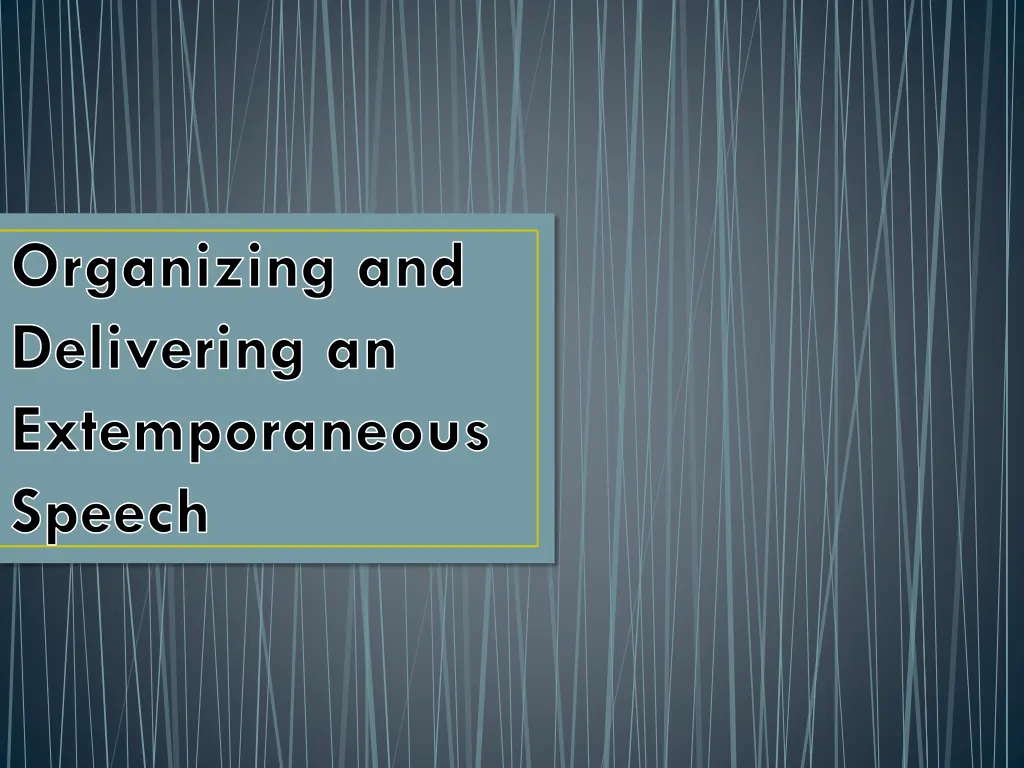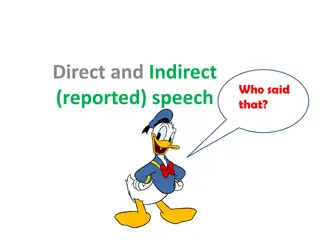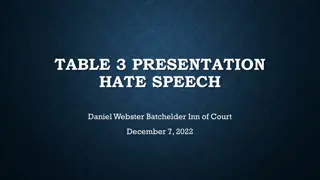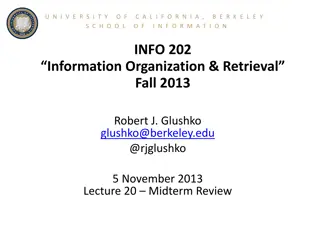
Crafting an Extemporaneous Speech: Tips and Techniques
Learn how to organize and deliver an extemporaneous speech effectively with short notes and clear outlines. Discover the steps to study your topic, choose an organizational pattern, prepare successfully, create an outline, and execute your speech flawlessly. Improve your public speaking skills with these insightful guidelines.
Download Presentation

Please find below an Image/Link to download the presentation.
The content on the website is provided AS IS for your information and personal use only. It may not be sold, licensed, or shared on other websites without obtaining consent from the author. If you encounter any issues during the download, it is possible that the publisher has removed the file from their server.
You are allowed to download the files provided on this website for personal or commercial use, subject to the condition that they are used lawfully. All files are the property of their respective owners.
The content on the website is provided AS IS for your information and personal use only. It may not be sold, licensed, or shared on other websites without obtaining consent from the author.
E N D
Presentation Transcript
Organizing and Delivering an Extemporaneous Speech
Definition Planned and prepared speech. Delivered with the help of short notes and a clear outline. Delivered conversationally. More spontaneous and personal. Commonly used during campaign speeches before election and class reporting. A smooth, dynamic performance that incorporate research, background knowledge and opinion. Social issues is the most commonly used topic.
3 Steps in Studying your Extemporaneous Topic Identify the type of extemporaneous question you have to answer. Is it a question of fact? - Typically answerable by Yes or No . Is it a question of value? - Centered on whether a topic is good or bad, moral or unmoral, just or unjust. Is it a question of policy? - Focused on what policy or rule should be followed.
2. Determine if your topic is informative or persuasive. 3. Stick to your topic and look at all of the sides and angles of the problem.
Choosing an Organizational Pattern or Method Cause and Effect Problem and Solution Advantage and Disadvantage Logical Time or Chronological Spatial or Geographic
Steps in Preparing for a Successful Extemporaneous Speech Reinforce! Capture! Develop! Introduce! Check! Supply! Conclude!
Outline for an Extemporaneous Speech I. Introduction A. Opening attention-getter B. The need to listen C. thesis Statement II. Body A. Main Point 1 1. Subpoint 1 a. Evidence b. Statistics 2. Subpoint 2 a. Evidence b. Statistics B. Main Point 2 1. Subpoint 1 a. Evidence b. Statistics 2. Subpoint 2 a. Evidence b. Statistics III. Conclusion A. Attention getter b. Restatement of thesis or review of main points
6 process for Doing an Extemporaneous Speech Choose your topic. Make a thesis statement. Create points that support your thesis. Develop support for your thesis. Write your introduction, body and conclusion. Deliver your speech.
REFERENCE: Sipacio, Philippe John F. & Balgos, Ann Richie G. (2016) Oral Communication in Context For Senior High School () C & E Publishing:893 EDSA, South Triangle, Quezon City

![Prevention and Combating of Hate Crimes and Hate Speech Bill [B.9B.2018]](/thumb/60513/prevention-and-combating-of-hate-crimes-and-hate-speech-bill-b-9b-2018.jpg)




















